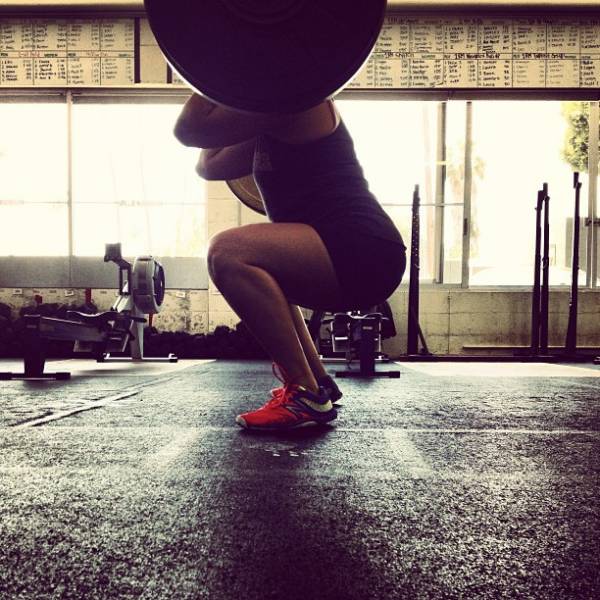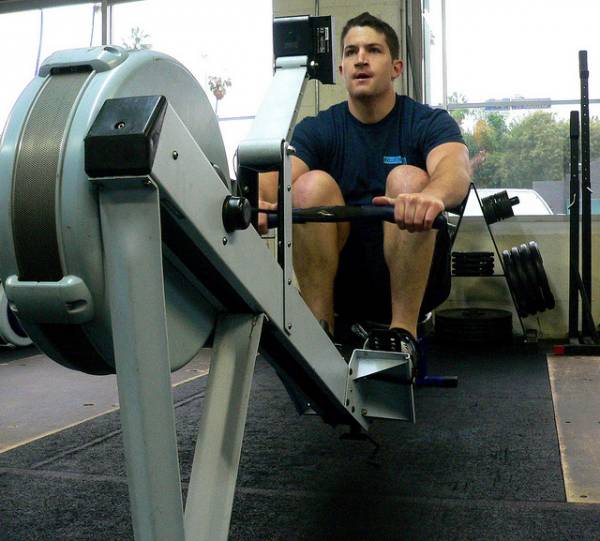In a perfect world we’d all be able to do everything and training sessions would consist of performing freestanding handstand push ups, lifting more than Klokov, and finishing with a conditioning run that involved backflips off buildings parkour style. But that’s not reality.
In a perfect world we’d all be able to do everything and training sessions would consist of performing freestanding handstand push ups, lifting more than Klokov, and finishing with a conditioning run that involved backflips off buildings parkour style. But that’s not reality.
Reality is most of us are messed up in some way and there are just some things we shouldn’t do. That doesn’t mean don’t train, nor does it mean we spend all of our time on correctives. There’s always a way to work around a problem, avoid injury, and keep edging our way forward.
Here’s what some of us just shouldn’t do, and what we can do instead:
Tall Guys
Tall guys have some unique issues that shorter folks don’t have. Sure, it’s great to be able to reach the top shelf without a stepladder and it’s good not having everyone’s armpits in your face on the train, but some lifts are going to be difficult.
Many top strength coaches, like Mike Boyle, suggest that taller lifters shouldn’t train off the floor, but from either the hang or off blocks.
One of my clients has found, through injury-laced trial and error, that when we deadlift off the floor his back locks up. But start a few inches off the floor, courtesy of resting the bar on a couple of plates, and he’s fine.
The same goes for squats. That super deep, working-in-a-rice-paddy squat just isn’t going to happen for taller lifters.
Rob Shaul of Mountain Athlete suggests that taller trainees need only worry about going to parallel and no deeper as the risk of the tail tucking under becomes more pronounced.
I know people will say these athletes just need to get stronger through the abs, but in taller lifters there’s simply a lot of spine to stabilize and sometimes the answer is to slightly shorten the range rather than risk injury by going deeper.
People With Shoulder Issues
A lot of shoulder issues aren’t due to bad shoulders but to bad movement somewhere else in the chain, usually the thoracic spine.
At my gym, when we have new clients come in one of the first things we teach them is the get up.
The reason is that during the get up all kinds of things become obvious and one of them is what we’ll simply call “bad shoulders.”
From the point where you are in a kneeling lunge position, your arm that is holding the kettlebell should be completely vertical, with your bicep in line with your ear, and you should be looking straight ahead. The same goes as you stand up – if you can see your hand when you’re completely upright you’re doing it wrong.
If you can’t stand with your arm vertical it usually is a sign of some tightness in your upper body that is quite fixable in most cases.
The same holds true for any exercise from kettlebell snatch to barbell press or jerk. If you can’t stand upright with arms in line with ears then you have shoulder issues and should address them now before the surgeon needs to. Some solutions include kettlebell armbars, Brettzels, bridging, and stretching the lats, pecs, and triceps.
There are ways to adapt the get up in the short term too, while you’re working on your mobility.
You could do half get ups, which have you sit up from the floor and return down, with your hips never coming off the ground. (Think of this as a sit up, but done as a get up.)
This position allows the arm to never need to be near vertical, yet still gives many of the great benefits of the exercise from the rolling and crawling patterns to shoulder and trunk stability.
When it comes to people’s much-loved pressing there are plenty of options that don’t require you to go overhead such as bench press and many push up variations.
Most people with troubled shoulders find if they stick with the exercises that are below shoulder height, they do fine.
People With Knee Issues
I love squats. I know the deadlift is all in vogue these days, but squats are my favorite. But not everyone can cope with squats and there are plenty of people around with glass knees.
One of the things that sets off problem knees is how far from vertical the shin travels while performing an exercise. So a weightlifting front squat, which often sees the knees travel so far forward that they end up in front of the toes, will be hard on the knees (pictured right).

On the other hand, a powerlifting squat where the shins are nearly vertical and the butt is pushed back will be more likely to be acceptable.
But there are even more ways you can train the legs and avoid knee issues. Reverse lunges are a great way to attack all parts of the legs and make sure to keep a vertical shin. I personally find heavy sled work to be a huge benefit – all concentric muscle action too, so there is little associated muscle soreness.
But the easiest way to train maximal strength and maintain vertical shins is the deadlift. While it won’t develop the same leg strength as squatting, it will be an alternative that you can use for the rest of your life.
People With Wrist Issues
Many people these days suffer from wrist issues. Part of the problem is tightness due to a flexed working position and a lot of time spent on a keyboard. Others may suffer from arthritis.
Whatever the root of the problem, there will be many lifts that cause the injured athlete issues. Barbell work such as front squats, presses, push presses, and jerks will all be uncomfortable, as will many bodyweight exercises like push ups and handstands.
This is a great place to use kettlebells in your training. Done properly, there isn’t a single kettlebell exercise that has a bent wrist position.
While you may not be able to get the same load on the body from a kettlebell variation compared to a barbell movement, because of the offset nature of the load and the lack of stress on the inflamed joints you’ll still be able to get an equal training effect.
Try replacing your damaging barbell work with kettlebell front squats, presses, and jerks for a while and see how little stress there is on the wrist if you keep it neutral – something neither bars or dumbbells allow for.
People With Calf, Achilles, or Foot Issues
While I’m a relative beginner in endurance training myself, I guess I’ve had my fair share of issues over the last eighteen months.
Now my clients are starting to get into some endurance work of their own, and issues of the calf, Achilles, and foot are the most common problems I see people have from starting running.

The most important thing to do if you start getting flare-ups in the lower limbs is to stop doing the thing that is hurting it.
If running is the issue, and it often is, then try riding, rowing, swimming, or another form of cardio training like kettlebell swings that allows your foot and ankle to be under less stress.
While running fitness is specific to running to a degree, you’ll be surprised how much running fitness you can maintain by working hard at other disciplines. But you have to stop the cycle of inflammation before it can get better, so lay off the activity causing the problem.
Be smart with your training. Injuries and the issues associated with them are part of training if you push hard, or if you sit for a job.
In other words, everyone is likely going to have an issue of some kind sooner rather than later.
But modifying your training to minimize that issue is smart and allows you to keep training rather than take a full hiatus when you’re forced to have an operation.
We’re all in this for a long time. Don’t worry about winning a battle today to lose the war in the long term. In other words, take it easy now if you need to, so that you can train for life – not just for the immediate future.
Photos courtesy of CrossFit LA.






